#faust last cantata
Text
Dramatic Masterpiece Show "Faust Last Cantata" PV - Translation
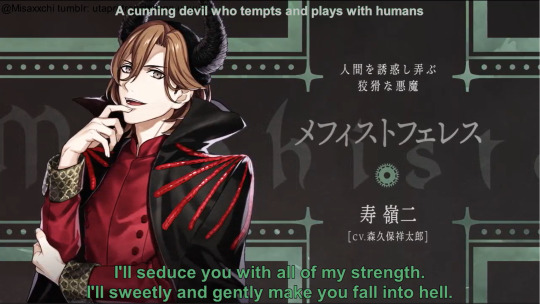
Do not retranslate/repost without permission.
#uta no prince sama#utapri#translation#english#quartet night#dramatic masterpiece show#reiji kotobuki#ranmaru kurosaki#ai mikaze#camus#faust#faust last cantata
120 notes
·
View notes
Text
Full version of Togabito no Requiem from Quartet Night's Dramatic Masterpiece Show Faust Last Cantata!
Please buy the original if you can! This song is available internationally! US Apple Music link
Please consider ordering the drama CD yourself! Otherwise, the files can be found here!
91 notes
·
View notes
Text



so there are gonna be three stories basically one for each unit
heavens’ story is called Dreaming of OZ so basically wizard of oz
starish is NEVER AGAIN NEVERLAND which is probably obvious that it’s peter pan
quartet night is i think translated to Faust’s Last Cantata so it’s faust
to be honest the story i know the least about is the faust one and by that i mean most of my knowledge of it came from a magical girl anime
15 notes
·
View notes
Text
Sad but also 'fun'facts about Winslow in my AU:
- he starts composing songs with the main theme being the uncertainty of fatherhood or about family in general once he realizes he's got a bun in the oven <3 the lyrics goes right over Swan's head since all he cares about is how it sounds, not what it's about.
- he would cry himself to fall asleep daydreaming he could have his closest friend helping him during this weird fucking time in his life and looking after him since most days he feels like absolute garbage (VERY few times needing to go as far as to ask Swan for help). He wished he could tell Phoenix or ask her for help much earlier than he actually did, but alas. The bird remained in his lonely cage (the studio).
- this is more of a general headcanon but I really like to think there are like. Whole ass bedrooms and small kitchens hidden inside the Paradise. Swan has a secret room for his tapes so why not Somewhere to sleep in to keep watch over them or lurk around the building. Because of this I like to think an extra room has been made to accomodate Winslow since he kind of just. Is imprisoned there since he's: A. Presumed dead, a d B. Even if he wasn't, he's publicly known as a convicted doper and escaped criminal.
- WINSLOW WOULD SING HIS FAUST TO HIS PAUNCH <3333 the song itself, in his mind, detaches and becomes less of a piece from his cantata and a more personal weird lullaby about a german magician that he sings for his baby . Yes he still sings it to Johann even after they're born and fully grown up.
- Winslow is a bit more animalistic here when he becomes aggressive towards Swan or the Paradise workers because of his 9 month period time when he had powers and was a beacon between worlds, AKA demons could very well see him and come interact and Winslow would defend himself and tear them apart and eat them. The mad composer is allowed to indulge in a little bit of monster cannibalism, as a treat <3
- I saw a comment a user did on here of the shots Winslow appears in during Life at Last, describing how he looks like he's ready to bite someone's head clean off in those frames. Well in my AU that becomes canon. Winslow would bite off someone's head if anyone tried touching his belly or doing anything to Phoenix.
#winslow leach#potp au: paradises antichrist#mpreg tw#i need to fucking reblog that thing it made me laugh so hard
3 notes
·
View notes
Text
TOP 15 attractions in the heart of Germany

Old Germany has been attracting thousands of travelers to its sprawling streets lined with historical landmarks for many years. We have collected for you a significant selection of interesting things to do in Frankfurt am Main, so that you do not get lost among the variety of unique points of the city.
Römerberg Square
Römerberg Square is where all the trails in Frankfurt lead. The locals simply called her Roemer. The square received its name in honor of the 600-year-old Römer Town Hall, whose name translates as Roman. It is its stepped pediment, decorated with statues of Emperors Charles IV, Frederick Barbarossa, Ludwig II and Maximillian II, that is found on magnets, postcards and souvenir plates.
In addition to the town hall, a huge number of historically and culturally important points are concentrated here. For example, the 13th century Frankfurt Cathedral, where the Holy Roman Emperors were once crowned. Also here you can see houses from the 14th and 15th centuries with fancy names, for example, “Little Badger Hole”, “Big Angel” and “Golden Vulture”. Like the town hall, the cathedral and all the houses were meticulously restored after the war.
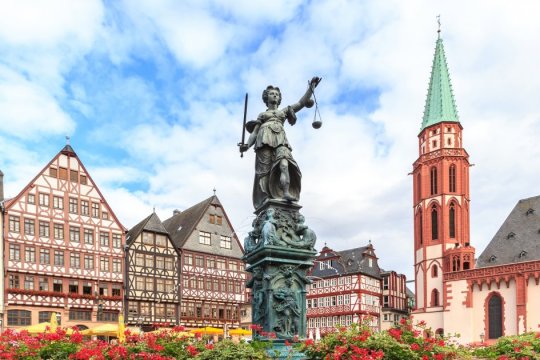
© depositphotos Photo by pigprox
Shtädel Art Institute
The Städel Art Institute is the best option for art lovers to visit in Frankfurt am Main. It is in this museum that the largest and most valuable collection of graphics, sculptures and paintings in the country is located. Thanks to this fact, the object is included in all lists of the main attractions in Germany.
The institute received its name in honor of I. Städel, its founder and famous banker. The building houses not only an art museum, but also an art school.
Frankfurt Cathedral
Frankfurt Cathedral or Imperial St. Bartholomew's Cathedral is located near Römerberg Square. The giant Gothic building with its red facade and 95-meter tower is hard to miss. It was here that German kings were chosen and crowned since 1356. Frankfurt Cathedral is a national symbol due to its historical and political importance.
Considering all these facts, Frankfurt Cathedral can be called the main shrine of the city.
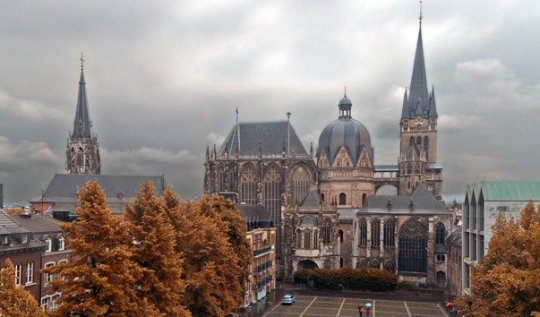
Photo by - travelpost
Museum Embankment
This is where the soul of persistent connoisseurs of the cultural program really plays out. After all, 39 museums and exhibition venues of different sizes and directions are concentrated here.
Among them are the Archaeological Museum, the Caricature Museum, the Museum of Romance, the German Film Museum, the Eintracht Museum, the Goethe House Museum, the Historical Museum and many others (we will talk about some of them in more detail). The complex is constantly expanding and adding new institutions.
There is also a promenade in the Alt-Sachsenhausen district, famous for its bars and restaurants serving unusual apple wine.
Goethe House and Museum
Two adjacent museums are dedicated here to the great poet of all times, Johann Wolfgang von Goethe.
Goethe's First House is the place where he was born on August 28, 1749 and spent his childhood and youth. The cult novel “The Sorrows of Young Werther” was created here, as well as the first sketches for the poem “Faust”.
Another building is the Goethe Museum, an art gallery with a large collection of paintings, graphics, busts of the 18th and 19th centuries. Thanks to the art of Goethe's time, you are immersed in the world of the writer, who was also an amateur artist, art connoisseur and collector.

© depositphotos Photo by SKahraman
Old opera
The Old Opera is a former opera house that now houses a concert hall and a congress center. About 460 events are held here every year - music concerts of various genres, entertainment and educational programs for children and adults, conferences and seminars.
Construction of the opera lasted from 1873 to 1880. In 1937, it was on the stage of this theater that the world-famous cantata Carmina Burana by the German composer Carl Orff was first performed. During World War II the building was heavily damaged. The restoration took almost 40 years - the opening of the renovated theater took place in 1981.
The decoration of the building is amazing both outside and inside, so we recommend visiting this place to everyone, even those who do not consider themselves an outspoken opera connoisseur.
Palm Garden
If after a busy program in a big city you want to hide from its bustle for a while, feel free to go to the Palm Garden. This is a luxurious botanical garden built in 1871 with an area of more than 20 hectares and one of the largest park areas in the country. Almost half of the garden's territory is reserved for all kinds of palm trees - spreading and bizarre, exotic and completely unique - they gave the name to the garden.

Photo by tourist
Maintower
The Maintauer is the fourth tallest skyscraper in Frankfurt and Germany. It received its name in honor of the Main River. From the outside, the building looks like two connected towers - rectangular and round. In the foyer, visitors are greeted by a video installation and wall mosaics. There is a place on the roof of a skyscraper from where you can see the entire city. This is the highest observation deck in Frankfurt (200 meters). The panorama looks especially impressive after sunset.
Just imagine that on the 53rd floor of the tower there is a restaurant, from where you can enjoy a picture of the city accompanied by haute cuisine.
Senckenberg Museum
To get to this museum you will have to make a little effort, because it is located in the suburbs. But believe me, it's worth it.
Currently, this complex is one of the largest educational and research institutions of this level, which offers a unique exhibition dedicated to the development of flora and fauna on Earth. Every year, about 500,000 people come on excursions to the halls of the Senckenberg Museum of Natural History - the collection of this complex is considered one of the best in the world and the most complete in Germany.

Photo by tournavigator
Hauptwache Square
Another famous square in the city. The main architectural masterpiece of the Hauptwache is the Baroque house, which primarily serves as the headquarters for the policemen. When you arrive at this square, you can explore the shops and restaurants, the underground pedestrian area and the sunken terrace. Among the local attractions we also highlight the Church of St. Catherine.
Market Kleinmarkthalle
If you are one of those tourists who, having arrived in a new country, are never going to take all their money back, go to the Kleinmarkthalle. This indoor market in the city center has over 150 stalls.
Every day, except Sunday, you can buy fresh vegetables, fruits, herbs, meat and seafood, as well as finished products - desserts, pastries, sausages, cheeses and the famous Frankfurt green sauce. The Kleinmarkthalle has outlets selling Turkish, Spanish and Italian cuisine. This is a great place to have lunch in between exploring the city.
Hessian Park
The Open Air Museum, which is located near the city and can introduce you to the traditions and culture of Frankfurt and the entire region, deserves special attention. The vast area of the Hessian Park contains more than a hundred buildings that give the impression of being in an authentic German village. There is a store with craft products and a post office. You can enter all buildings and pick up all household items.
Due to the fact that the attraction is not the most famous and is located far from the city, the number of guests here is usually relatively small. Crowds of tourists and vacationers will not interfere with your walk.
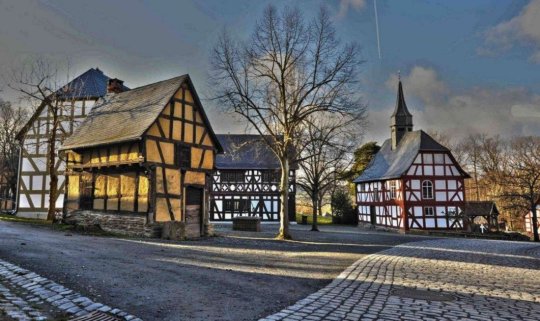
Photo by kidpassage
Bethman Park
A real green oasis is a grandiose park at the mansion of the famous German Bethmann dynasty. The park is separated from the noise of the metropolis by thick ancient walls. The city was given a beautifully equipped park by the famous Bethman dynasty of bankers.
The main attraction of Bethman Park is the chess court. This is a special area for chess players, where the playing field is placed on the asphalt with marked squares and figures. You can often meet local intellectuals here.
The Chinese garden, the highlight of Bethmann Park, will not go unnoticed. It is organized according to the principles of Feng Shui. In the central part of the garden there is a pagoda - a favorite plant from which people love to brew aromatic and healthy tea. The city also inherited a luxurious mansion in Bethman Park, which harmoniously fits into the beauty of nature.
Gallery Schirn Kunsthalle
The Schirn Kunsthalle is an art gallery located in the Altstadt district between the town hall and Frankfurt Cathedral. Its opening took place in 1986.
There are no permanent exhibitions here - only temporary exhibitions are available to visitors. However, the gallery presents both the works of classics and contemporary artists, and hosts seminars, master classes and various events. The gallery can be considered as an alternative to all the classic museums of the city, if you have already visited them.

Photo by - schirn
Frankfurt Museum of Modern Art
The museum was designed in 1981 by the Viennese architect Hans Gollein. Because of its triangular shape, it is called a “piece of pie.”
The basis of the museum is the legacy of the German collector Karl Strecher, containing 65 works of pop art and minimalism. Today, the permanent collection includes more than 4,500 works of international art, dating from the 1960s to the present day.
Read the full article
0 notes
Text
Maddie's Quarantine Reviews: Phantom of the Paradise (1974)
The Plot
Winslow Leach is an insanely talented, but also ridiculously naive composer. He wrote a 300 page cantata about Faust and is trying to get it produced, but is wildly unsuccessful in doing so. Until one day the legendary pop star Swan hears him playing in a club. However, this doesn't necessarily mean good luck for poor Winslow: Swan has his assistant Philbin steal Winslow's music and produces it his way - ergo horribly and in a way that suits his new music hall, the Paradise. While trying to get it back Winslow meets Phoenix, a young singer auditioning for Swan, and instantly falls in love.
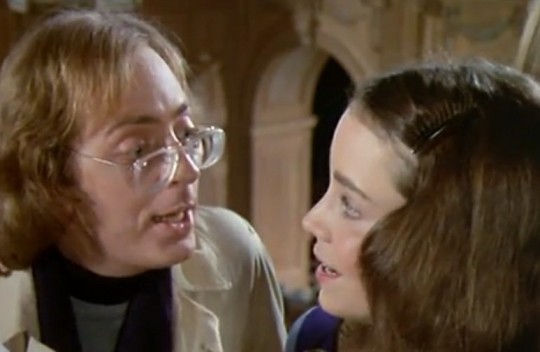
Swan has enough of Winslow meddling in his affairs, so he arranges that the composer is sent to prison. Winslow, however, proves to be quite attached to his work, breaks out and tries to destroy the record factory. This goes wrong and he leaves after having his face burned in a freaky accident involving a record press. At this point Winslow decides to go feral, gets himself a bird mask and a leather outfit and becomes THE PHANTOM OF THE PARADISE, determined to destroy Swan and find Phoenix.
The Characters
Winslow. Oh boy, where do I even start. Winslow is an INCREDIBLE character and I love him so much. He starts out as this innocent cinnamon roll and as the movie continues we watch him descend into madness and murder. Even though 70% of this movie we only see his mouth and one eye William Finley manages to show his emotions so, so well. I honestly don't know who else could've done so well.
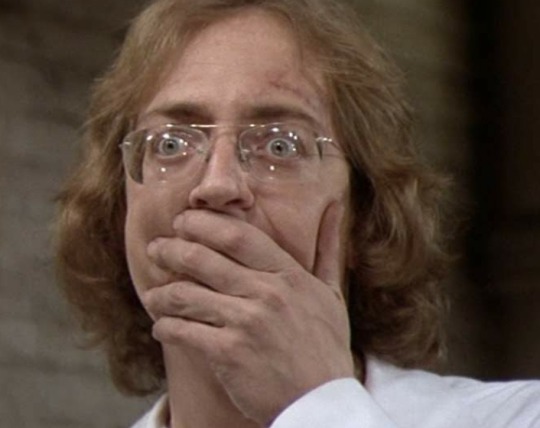
Next up we have Swan. Oh Lord, oh Jesus. Paul Williams did a TERRIFIC job. I just...you see, Swan's tiny. And I love the concept. Because we have this bad guy who holds all the strings and he looks like a muppet (I'm sorry, Mr Williams, if you ever read this...!). In contrast to that we have William Finley as Winslow, who's literally two metres tall and it's hilarious and adds a whole new dynamic to the story.

Then there's Phoenix, the damsel in distress. To be honest, I feel like there could've been more depth to her character. That's not Jessica Harper's fault, she did an amazing job and her singing voice is astounding (Side note: I only realized I was an alto thanks to this movie...!). But Phoenix could've had more depth. She, as a character, has so much unused potential.
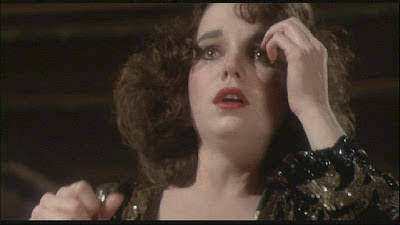
Next up we have...BEEF. He's considered a fan favourite. Most people love him as much as they love Winslow, and considering he doesn't even have THAT much screentime, that's something to say. He's also a sneaky LGBT representation and you can tell that Gerrit Graham really had fun playing him. His lines are... chef's kiss. "I know drug real from real real." This man is a legend.
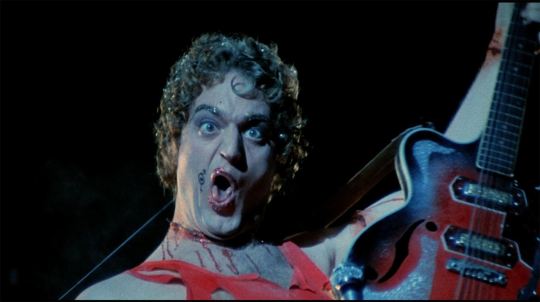
Then we have Arnold Philbin, Swan's assistant. Blissfully unaware of what the everloving fuck is going on he merely follows orders and gets his portion of girls on the literal casting couch, if you know what I mean. Again, I feel like he could've had more character depth. But maybe that's just me.

And last but not least...the Juicy Fruits. A band of three, they constantly change their style throughout the movie. They barely have any spoken lines, but they do play a part. You can tell that the actors had a lot of fun playing them and you can often see the trio in the back, making funny faces or reacting to what is going on in the front.
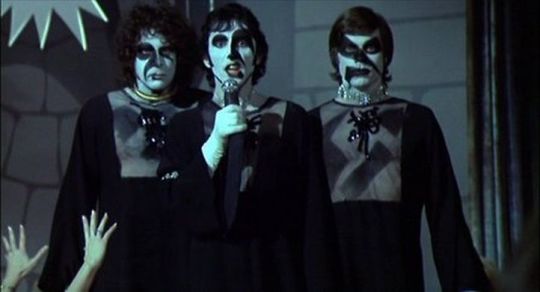
My thoughts
Phantom of the Paradise may have been a box office failure, but it's such a ridiculously impactful movie that it's downright hilarious that it's so unknown. Star Wars, The Crow, My Chemical Romance, Daft Punk, Edgar Wright, Guillermo del Toro, they were all inspired by this movie.
The whole thing is like a cartoonish LSD trip, but there are warnings in it that are still relevant today. You'll love every single character, William Finley's acting as Winslow is peak and I can't begin to describe how much I love Phantom of the Paradise. The music is wonderful, the actors have great chemistry, you can tell how much everyone loved being there and...oh my God. WATCH PHANTOM OF THE PARADISE.
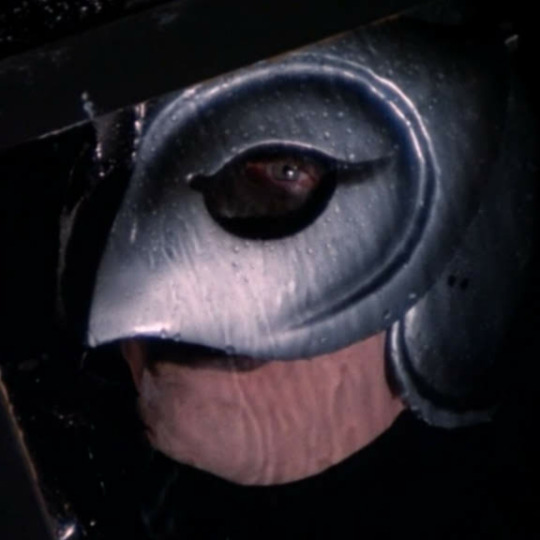
5 notes
·
View notes
Photo

Berlioz: The Damnation of Faust
Classical Music Notice: The BBC Proms are underway. (The Proms are a huge summer concert festival.) Last Tuesday, Sir John Eliot Gardiner, Michael Spyres, Ann Hallenberg, Laurent Naouri, and the Orchestre Révolutionnaire et Romantique did a performance of Hector Berlioz' Dramatic Legend (between an opera and a cantata) titled "La damnation de Faust" (The Damnation of Faust). Between parts 2 and 3, there is an 20-minute intermission feature where they talk about The Devil in music with the author of the book The Devil: A Biography, Peter Stanford. After part 4, they play Giuseppe Tartini's "Devil's Trill". The whole broadcast runs about 3 hours. You have just under four weeks to listen. I highly recommend it.
—Reverend Gene of Vox Satanae
#berlioz#the damnation of faust#faust#sir john eliot gardiner#the devil in music#classical music#vox satanae
10 notes
·
View notes
Text
New Post has been published on The Maier Files
New Post has been published on http://the.maier-files.com/have-a-nice-walpurgisnacht/
Have a nice Walpurgisnacht
The time has come tonight … WALPURGISNACHT!
In the last days of paganism in Germany, the druids’ sacrifices were subject to punishment by death at the hands of the Christians. Nevertheless, at the beginning of springtime the druids and the populace sought to regain the peaks of the mountains so that they could make their sacrifices or experience their celebrations there, and to intimidate and chase off the Christians (usually through the latter’s fear of the devil). The legend of the first Walpurgis Night is supposed to be based on such attempts.
At its center is the Walpurgis Night, a supposed celebration of evil that is named after a British saint whose good deeds took place deep inside what is now Germany. That fabled convergence of good and evil was treated in literature in a short ballad and two topically related scenes of the Faust tragedy by Johann Wolfgang von Goethe (1749–1832), a pantheistic scientist, draftsman, and poet. Many of the legends of the Walpurgis Night center on the Brocken, the highest peak of the Harz Mountains.
As you are a reader of Maier files you already know that this region also plays a significant role in the series.
Throughout Western European spheres of influence the night of April 30 is home to a conspicuously secular celebration. It is known in Germany as die Walpurgisnacht (Walpurgis Night), alternatively in the United Kingdom and the United States as Beltane or May Eve; in Italy as la notte di Valpurga, Beltane, or Calendimaggio; in Spain as la noche de Walpurgis, and in France as La nuit de Walpurgis or simply La Walpurgis. After Christmas and Easter it is one of the major holidays in Finland and Sweden (VapunAatto and Valborgsmässoafton, respectively). Its origins antedate written records, and it is host to a wide variety of popular and commercial revelries. Like its autumn counterpart, Samhain or All Saints – Halloween, it is practiced today primarily in folk culture. Also like Halloween, the Walpurgis Night celebrates magic and the supernatural, the profane alternative to the predominantly monotheistic cultures of mainstream society. And it, too, is home to countless ghost stories and a wide variety of folk tales populated by witches, werewolves, and other supernatural beings. Unlike Halloween or Samhain, however, the Walpurgis Night is equally at home in cultivated and ordinary areas of endeavor. It has been the subject of paintings and other visual artworks by Albrecht Dürer, Hans Baldung Grien, Eugène Delacroix, and Paul Klee, and of ballets by George Balanchine, Evald Smirnov, and Leonid Lavrovsky, among others.
The Walpurgis Night shares with many longstanding cultural practices the general theme of a fundamental conflict between Old and New. As its long history and conspicuously secular character suggest, the Old is essentially Europe’s preChristian religions; the new, European Christianity as a whole. The split also entails extensions (or subsets) of each of these, however. The political history by which Christianity assumed predominance as the religion of mainstream society in Western Europe aligns it with the late Frankish, Merovingian, and early Carolingian kingdoms (ca. 500–800 CE). The resultant political and religious structure, coterminous with the New generally, may be termed Western Christendom, distinguishing it from Byzantium to the East and Anglo-Saxon Christendom in the British Isles.
The family structures of the Eastern Germanic tribes were oriented not around the concept of the independent individual, but around the sib (sippia, sippa), the community of free individuals, both living and dead, who were related through either blood or marriage. Despite significant differences in worship customs and eschatology (a part of theology concerned with the end time), until fairly late in their history the Germanic tribes conducted most of their worship services in the open air rather than in temples, with a special preference for hilltops, mountaintops, and other elevated sites. They shared a deep reverence for the forest and a belief in women’s—especially older women’s—wisdom, particularly their powers for divination.
The surviving evidence suggests that the Walpurgisnacht acquired its name through the convergence of several figures and dates that are at turns loosely related or unrelated: a pagan goddess (or several pagan goddesses) whose history antedates the documented Walpurgis Night legends. There is some possibility that the term’s use derives from a prehistoric Germanic cult of a goddess named Walburg. The Walpurgiskirche formerly situated in Gröningen (near Magdeburg) was supposedly named after this goddess, and far more west the Walburgakerk in Veurne in Flanders, was supposedly built on the site where sacrifices to her had been made. That region Veurne – Ypres also have a profound very old witch lore. Equally possible is that the term is applied in derivation from two Old High German and Norse elements that occur in Saxon and Norse mythology in connection with Wuotan: the Old High German prefix wal- and its Norse counterpart val- (to choose, select, pick out), and burg / borg (castle, stronghold). According to myth, Wuotan and the goddess Freia celebrated the beginning of springtime with a group of snow-white, winged virgins in a special section of Walhalla named the Walburg. But these graceful young females achieved that state of beauty through a process of transformation—for the blissful month of carnal celebrations was preceded by the stormy months of competition for the godly consort.
More easily documented are the life and works of the eighth-century Benedictine abbess Walpurgis. Although Walpurgis’s biography is suffused with fictitious anecdotes, one of the remarkable events of her life may relate to the instrumental introduction that precedes Mendelssohn’s setting of Goethe’s cantata in Goethe’s 1799 ballad “Die erste Walpurgisnacht,” and one further event offers a parallel to the poem’s theme of darkness and light. She brings the light.
The Brocken and the Harz are located between the Weser and Elbe rivers northeast of Göttingen and southwest of Berlin, east of most of the Frankish – Saxon conflicts and northwest of St. Walpurgis’s domains in Heidenheim and Eichstätt. This location may be partially responsible for their reputation as places of eerie and unexplained happenings, for the Brocken was remote from all the advancing fronts of Christendom during the Carolingian era and home to the fierce Saxon tribes whose ritual sacrifices and other pagan practices, in the eyes of their Christian adversaries, immediately proclaimed their alliance with the devil. The dense forests, steep, craggy slopes, and narrow valleys of the range constituted some of the most challenging terrain faced by the advancing Christian front. The summit of the Brocken itself was deemed unattainable to all humans except experienced hikers for centuries more. Those who reached it found a sparsely vegetated peak shrouded with mists and populated with various bizarre rock formations, among them the imposing and grotesque formations that eventually became known as the Teufelskanzel (devil’s chancel) and Hexenaltar (witches’ altar). But if the difficult terrain of the Harz, its history as one of the last strongholds of heathenism, and its uncanny apparitions pointed to the Brocken as home to Christendom’s enemies, this reputation was solidified by one other, far uglier cultural event: the fascination with witchcraft and sorcery that began in the fourteenth century and culminated in the notorious witch trials and murders of the fifteenth, sixteenth, seventeenth, and eighteenth centuries.
Have a nice Walpurgisnacht!
Lady witches of the Maier files celebrate Walpurgisnacht
1 note
·
View note
Photo
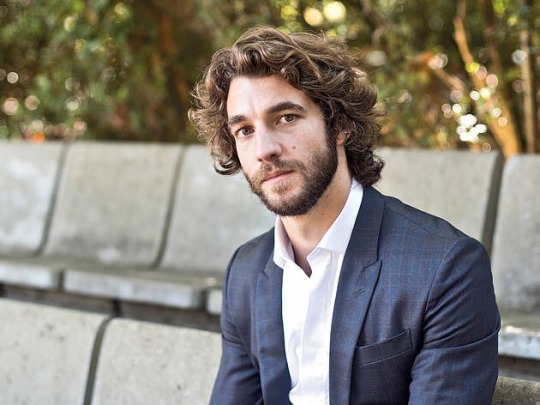

UM ANTIGO ASSINANTE SAUDA O JOVEM VIOTTI , NOVO MAESTRQ TITULAR DA GULBENKIAN PELO CONCERTO DE ABERTURA DA TEMPORADA : com atraso invulgar , aqui venho registar as minhas impressões do concerto de abertura da temporada .O jovem maestro de 28 anos apresentou um alinhamento sofisticado e desafiante com duas obras primas do romantismo alemão pois incluía, na primeira parte, a Canção do Destino (Schicksalslied), para coro e orquestra, de Johannes Brahms, sobre poema de Hölderlin; e na segunda parte, a Sinfonia n.º 1, em Ré maior (versão definitiva em quatro andamentos, ex-Titã), de Gustav Mahler. Como a Canção do Destino dura pouco mais de um quarto de hora, Viotti decidiu apresentar como extra , o quarto andamento do Concerto para Coro (1985) do compositor russo Alfred Schnittke (1934-1998), sobre texto S. Gregório de Narek (950-1003 d. C.).. Infelizmente deste acrescento ao programa original não foi disponibilizada informação impressa aos espectadores situação Inaceitável e mancha numa noite encantadora. Obcecado com o mito Fausto sou admirador de Schnittke (Cantata Faust ). A partitura polifonia” Sej trud, shto natchinal ja s upavan’jem” (“Termina este trabalho que eu comecei”), de tradição ortodoxa, mostrou-nos o Coro Gulbenkian no seu melhor: . Com toda a justiça, Viotti chamou ao palco o maestro do coro, Jorge Matta, para partilha dos aplausos Na segunda parte do concerto veio o fascínio da sinfonia de Mahler, com o seu infindável conjunto de combinações instrumentais e o caleidoscópio de partes solisticas . Parece evidente uma sintonia da Orquestra com o seu jovem maestro e dai que a vontade de não falhar resultasse excesso de concentração inicial dos músicos (tanto em Brahms como em Mahler Com alguma perda de fluidez . Dito isto, a orquestra apresentou do melhor Mahler que lhe temos ouvido .(denunciadas tantas vezes as suas limitações) .A direcção musical de Viotti, com desenvoltura técnica na transparência gestual , que lembra Jurowski , e na atenção às minúcias , tem a vitalidade da capacidade atlética de um jovem( cuja avocação e o surf )e de um estudo rigoroso .Realce para o mais pós-romântico terceiro andamento em que recortou a variedade das alusões mahlerianas, pinceladas impressionistas inseridas num rigor contrapontístico. Parabéns, pois, a Lorenzo Viotti . Last but not the least Viotti tem um” dress code “ tradicional e impecável que inclui sapatos de verniz . ****
0 notes
Text
The Beginning of the Tragedy - Translation (悲劇の開幕)
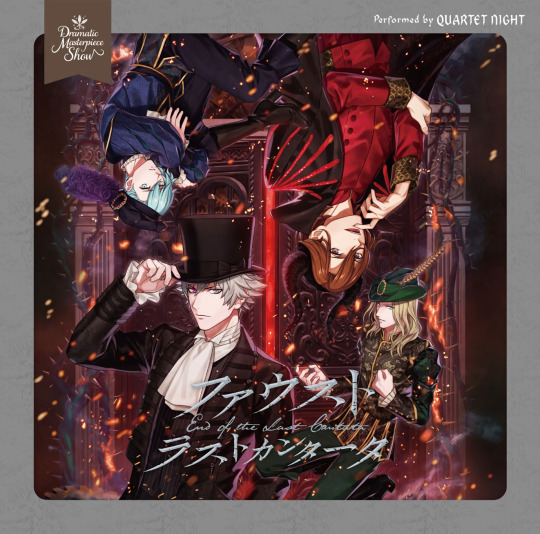
Please do not repost/retranslate without permission.
Translator's notes can be found at the end and are marked with an asterisk.
I have also made a version which includes the members' notes found in the script.
[A bet between God and a devil - Heaven]
A strong spotlight suddenly shines on Mephistopheles.
Mephistopheles is before God in Heaven.
Mephisto: Life is a stage. How will you live until the curtain of death falls?
He spreads his arms and inquires strongly.
Mephisto: That is a problem that has existed since mankind was created into the world. What will you achieve and what will you gain…?
He lightly shakes his index finger.
Mephisto: However, humans are granted very little time. Their soul is bound by the shackles of life, and, over time, aging wears down the body and death arrives… Although the duration of life varies, death comes to everyone equally.
He writhes wistfully and hugs his own body.
Mephisto: Even in that finite time, humans are foolish and plagued by worry. Sinning and following the wrong path…
A small flame emerges from his index finger, which he extinguishes by blowing on it.*
Mephisto: The insolence of overestimating oneself and being conceited… Only being able to get pleasure from looking down on others. The greed to have more than one can handle. Not knowing that selfish desires drive others away…
He thumps his chest and clenches his fist tightly in hatred.
Mephisto: And the feeling of jealousy towards those who are better than oneself! Feeding the flames of resentment, unaware that it stirs up more misery!
He shudders and holds his head between his hands.
Mephisto: Unreasonable feelings that emanate from not getting one’s way. Excessive anger drags people into a whirlpool of madness…
He swishes his cloak loudly.
He turns around and addresses God.
Mephisto: But that’s precisely why it’s so interesting! Don’t you think so, my Lord…!?
It’s so bright that the true form of God cannot be seen.
God: Devil Mephistopheles… Let us hear your case.
Mephistopheles takes a step forward.
Mephisto: They say humans were created in the image of God, yet they are imperfect and filled with greed! Isn’t your creation tarnishing your name…?
He moves like a beast, exemplifying their foolishness.
Mephisto: They hide from the eyes of the Lord, and they do deeds that are no better than those of beasts behind His back. Even those who appear to conduct themselves righteously. They have not a shred of reason!
A small flame emerges from his index finger, which he extinguishes by blowing on it.*
Mephisto: Reason is like the flame of a candle before the wind in the face of desire. Completely useless!
God: Is that all you have to say? Why do you raise such complaints?
Mephisto: Of course! Not because… it’s amusing, but because it’s so pathetic and egregious! Do you want to leave alone these humans who are nothing like you, but who are acting presumptuously under the authority of the Lord!?
God: Not all humans are without merit. Do you know Faust? He's a scholar, an outstanding human being.
Mephisto: Faust…? I’m sure he is without human failings, right?
He leans back as if surprised.
Mephisto: Doing things like miracles on the daily! Giving to the needy and standing by the weak… The kind of deeds that others should use as inspiration…?
God: No. However, I would say it is very human-like. To think, worry, and hesitate… that’s human nature. But I believe that in the end, he will choose the right path.
He claps his hands in exaggerated happiness.
Mephisto: … You believe! Ha-ha! Belief alone won’t save anyone! That’s why the human world is in such a terrible state!
He opens his arms.
Mephisto: Let’s make a bet! Who is right, me or you…? Are humans good… or do they succumb to evil?
God: Yeah, I’ll leave it to you. Do as you please. Since Faust himself seems to be at an impasse about the path that he should follow.
He clasps his hands tightly in front of his chest, excited.
Mephisto: Oh, this is getting fun! The greatest gamble of all time! Will man win or will the devil win…?
God: Fate has been set in motion. Whatever the outcome, let’s accept it.
Mephistopheles is full of motivation.
Mephisto: I’ll use all of my power to seduce you… I’ll sweetly and gently… make you fall into hell! Take a good look at the skills that have successfully been used to toy with great kings and virtuous saints!
God: If you underestimate humans too much, won’t you end up giving him an advantage?
Mephisto: What nonsense!
He bows slowly and in a very ceremonious way.
Mephisto: I’m going to show you all the misery and despair around the world… It’s the beginning of a stage filled with sin and taboo~!
[Title call/Titular line]
All: Faust Last Cantata
Notes: Repeated line in the script? I believe this might have been a mistake, and it was intended only for the second instance.
#uta no prince sama#utapri#translation#english#quartet night#qn#drama cd#dramatic masterpiece show#faust#faust last cantata#reiji kotobuki#ranmaru kurosaki#ai mikaze#camus
41 notes
·
View notes
Text
Keiyaku seiritsu - Lyrics + Translation (契約成立)
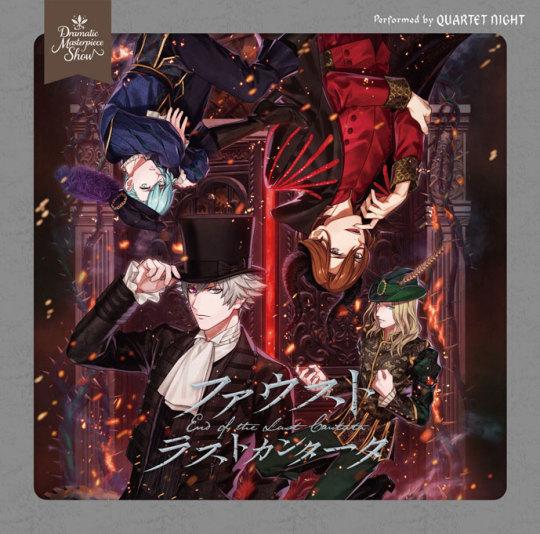
English title: Establishment of the contract / Conclusion of the deal
Please do not repost/retranslate without permission.
Kanji:
【Rj】 さぁ 命の契約だ!
キャンセルは受け付けませんよ?
【Ra】 そんなことは百も承知だ!
さぁ サインはどこに必要だ?
紙に契約文、サインをして、印を押す…
【Rj】 ご冗談を! これは悪魔のスタイル!
命を懸けた契約さ!
【Rj】 「時よ止まれ、すべては美しい」
【Ra】 「時よ止まれ、すべては……」
【Rj】 気を付けて!? この一言が契約完了の合図だ!
【Ra】 それはそうだな! 対価を払うには早すぎる
【Ra】 悪魔を出し抜いて 第二の人生を謳歌するんだ!
【Rj】 愚かな人間を誘惑し 魂を思いのままにするのさ!
【Ra】 人類が果たしたことのない奇跡!
【Rj】 地獄へ落としてやる!
【Ra】 永遠の
【Rj】 永遠に
【Ra】 夢を実現する!
【Rj】 こきつかってやる!
【Ra】 私ならできる!!
【Rj】 俺ならできる!!
【Ra】 天才ファウストの
【Rj】 悪魔メフィストの
【Rj・Ra】 すべてを懸けて勝ってやる!
【Rj・Ra】 さぁ 駆け引きの始まりだ
最後に笑うのは
【Ra】 人間だ!
【Rj】 悪魔だ!
【Ra】 美しく
【Rj】 醜く
【Rj・Ra】 望むものを手に入れるために
最後の仕上げだ
【Ra】 命を賭けて(ベット)新たな人生を!
【Rj】 契約完了!
【Rj・Ra】 背中合わせの切望と絶望を…お楽しみはこれからだ!
Rōmaji:
【Rj】 Sā inochi no keiyaku da!
Kyanseru wa uketsukemasen yo?
【Ra】 Son'na koto wa hyaku mo shōchi da!
Sā sain wa doko ni hitsuyō da?
Kami ni keiyaku bun, sain o shite, in o osu…
【Rj】 Go jōdan o! Kore wa akuma no sutairu!
Inochi o kaketa keiyaku sa!
【Rj】 “Toki yo tomare, subete wa utsukushī”
【Ra】 “Toki yo tomare, subete wa……”
【Rj】 Ki o tsukete!? Kono hitokoto ga keiyaku kanryō no aizu da!
【Ra】 Sore wa sō da na! Taika o harau ni wa haya sugiru
【Ra】 Akuma o dashinuite daini no jinsei o ōka suru nda!
【Rj】 Oroka na ningen o yūwaku shi tamashī o omoi no mama ni suru no sa!
【Ra】 Jinrui ga hatashita koto no nai kiseki!
【Rj】 Jigoku e otoshite yaru!
【Ra】 Eien no
【Rj】 Eien ni
【Ra】 Yume o jitsugen suru!
【Rj】 Kokitsukatte yaru!
【Ra】 Watashi nara dekiru!!
【Rj】 Ore nara dekiru!!
【Ra】 Tensai Faust no
【Rj】 Akuma Mephisto no
【Rj・Ra】 Subete o kakete katte yaru!
【Rj・Ra】 Sā kakehiki no hajimari da
Saigo ni warau no wa
【Ra】 Ningen da!
【Rj】 Akuma da!
【Ra】 Utsukushiku
【Rj】 Minikuku
【Rj・Ra】 Nozomu mono o te ni ireru tame ni
Saigo no shiage da
【Ra】 Inochi o betto arata na jinsei o!
【Rj】 Keiyaku kanryō!
【Rj・Ra】 Senaka awase no setsubō to zetsubō o… o tanoshimi wa korekara da!
Translation:
【Rj】 Now, this is a lifelong contract!
Cancellations are not accepted, okay?
【Ra】 I’m perfectly aware of that!
Tell me, where do I have to sign?
We’ll sign the contract on a piece of paper, and stamp it…
【Rj】 You must be joking! This is the devil’s style!
It’s a contract in exchange for your soul!
【Rj】 “Stop, moment, you are wonderful”
【Ra】 “Stop, moment, you are…”
【Rj】 Be careful!! This expression signals the completion of the contract!
【Ra】 That’s true! It’s too soon to pay the price
【Ra】 I’ll outwit the devil and enjoy a second life!
【Rj】 I seduce foolish humans and take their souls!
【Ra】 A miracle that mankind has never achieved!
【Rj】 I’ll make you fall into hell!
【Ra】 I’m going to
【Rj】 I’m going to
【Ra】 Realize an eternal dream!
【Rj】 Push you around forever!
【Ra】 I can do it!!
【Rj】 I can do it!!
【Ra】 The genius Faust
【Rj】 The devil Mephisto
【Rj・Ra】 Will put everything on the line and win!
【Rj・Ra】 Now, let the bargaining begin
The one who will have the last laugh is
【Ra】 The human!
【Rj】 The devil!
【Ra】 Beautifully
【Rj】 Unseemly
【Rj・Ra】 Adding the finishing touches
To be able to obtain what we want
【Ra】 Trading my soul for a new life!
【Rj】 The contract is complete!
【Rj・Ra】 Opposite sides of the same coin, desire and despair… The fun is just beginning
#uta no prince sama#utapri#translation#english#drama cd#quartet night#dramatic masterpiece show#reiji kotobuki#ranmaru kurosaki#ai mikaze#camus#faust#faust last cantata
38 notes
·
View notes
Text
Dramatic Masterpiece Series Masterlist
Heavens Dreaming of OZ:
Full CD
The Wizard of OZ and…
Unmei no Toki
Emerarudo shiti e no michi
Futari no Yume
Starish NEVER AGAIN NEVERLAND:
Full CD
Neverland no Kiseki
Yume no Kuni Neverland
Ikkiuchi
Ai no Uta
Quartet Night Faust Last Cantata
Full CD
Togabito no Requiem
Keiyaku Seiritsu
Seimei no Ibuki
68 notes
·
View notes
Text
Full version of Seimei no Ibuki from Quartet Night's Dramatic Masterpiece Show Faust Last Cantata! Sung by Ai and Camus!
Please consider ordering the drama CD yourself! Otherwise, the files can be found here!
62 notes
·
View notes
Text
Full version of Keiyaku Seiritsu from Quartet Night's Dramatic Masterpiece Show Faust Last Cantata! Sung by Ranmaru and Reiji!
Please consider ordering the drama CD yourself! Otherwise, the files can be found here!
56 notes
·
View notes
Text
Faust Last Cantata - Synopsis, Characters & Glossary

Do not retranslate/repost without permission.
Raws: @RoboB1sh (twitter) 💜
A stage of desire and despair unfolds as the curtain rises.
Synopsis of the story
An aging Faust is in utter despair over his life. He can't discover the truth and no one loves him.
Just as he reaches for poison to end his life, the devil Mephistopheles appears...
In exchange for Faust's soul, the devil promises to give him a second chance at life.
A tragic drama unfolds, pulling Wagner and Markus into the fray. What will become of this precarious deal between human and devil?
Characters
Ranmaru Kurosaki as Faust
Despairing of his life as a scholar, he makes a pact with the devil to seek the truths and joys of the world.

Reiji Kotobuki as Mephistopheles
A cunning devil who entices and manipulates humans. He makes a contract with Faust, granting him wishes in exchange for his soul.

Camus as Wagner
Faust’s disciple, good-hearted and humble. Although he is a mediocre scholar, he is full of hopes and dreams.

Ai Mikaze as Markus
A young prodigy scholar, often compared to Faust. He is Wagner’s close friend and conducts research related to life.

Glossary
Eternal life
Faust laments that life is too short and seeks "eternal life". It is a forbidden thought that ventures into the realm of the divine.
Poison
Unable to reach the truth of the world, Faust, in despair, chooses to commit suicide by poison. He mixed the chemicals and made the poison himself.
Faust's study
The place where Faust first met Mephistopheles. He owns many books on philosophy, jurisprudence, medicine, theology, and magic.
Rejuvenating medicine / Elixir of youth
A blood-red medicine containing ingredients such as the rotten roots of a 1000-year-old tree, the blood of a venomous snake, powder made from a ground-up giant spider, and mermaid flesh.
Night festival
"Walpurgis Night" is a yearly festival in which witches gather at night. The townspeople attend the festival dressed up in costumes.
Daisy flower
Also known as "unaffected by time" due to its long flowering period. It is a symbol of hope, purity, and innocence because of its tendency to bloom when exposed to light.
Wagner's laboratory
Wagner's laboratory is located near a sea cliff on the outskirts of the city. Various experiments are conducted here, and there are cages in a separate room to keep animals.
#uta no prince sama#utapri#translation#english#quartet night#reiji kotobuki#ranmaru kurosaki#ai mikaze#camus#dramatic masterpiece show#drama cd
77 notes
·
View notes
Text
Utapri Translations Masterlist
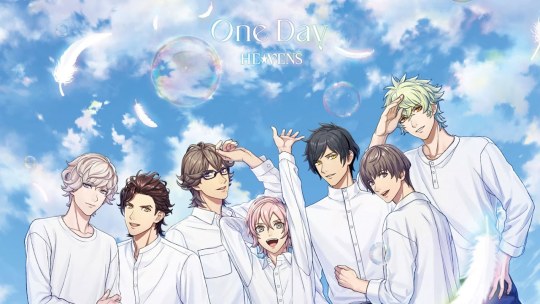
7th Stage Special Interviews
⇒ Terashima Takuma
⇒ Taniyama Kisho
⇒ Kimura Ryohei
LINE messages
QUIZPRI Legend Star
⇒ ST☆RISH Part 1
⇒ ST☆RISH Part 2
⇒ HE★VENS Part 1
⇒ HE★VENS Part 2
⇒ Punishment Game
HE★VENS LOVE AFFAIR - Drama CD
Dreaming of OZ - Dramatic Masterpiece Show
Faust Last Cantata - Dramatic Masterpiece Show
Dramatic Masterpiece Show
Song Masterlist
Other

Please note: Reposting, retranslating and using my translations in general without permission is not allowed.
76 notes
·
View notes